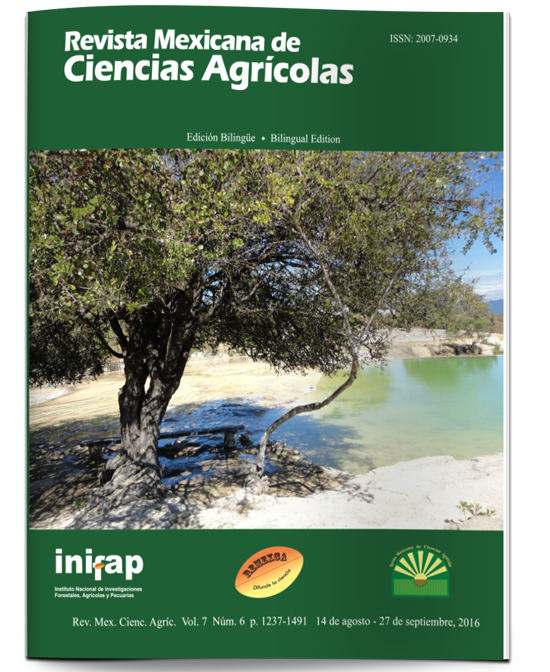Chemical scarification of papaya seed
DOI:
https://doi.org/10.29312/remexca.v4i6.1162Keywords:
Carica papaya L., sarcotesta, dormancy, germination, health, vigorAbstract
Late germinating and erratic seed from papaya is affected by the presence of sarcotesta, membrane containing phenolic compounds inducing latency same which inhibits the exchange of liquids and gases, prolongs the drying period and facilitates colonization of pathogens. The techniques used in benefit of the papaya seed to eliminate the sarcotesta are limited, therefore the aim of this study was to obtain useful technology in this aspect, which was compared to other treatments with sodium hydroxide, sulfuric acid and hydrochloric acid and assessed its effect on the physical, health and physiological quality of the seed. The research was conducted at the Seed Testing Laboratory of the Graduate College, Campus Montecillo, State of Mexico, in 2011. NaOH to 25% and 15 min of immersion, removed 98% of sarcotesta, presented just 2% of incidence of micoflora, an increased and homogenized germination. H2SO4 to 100% removed the sarcotesta, inhibited fungal colonization with only 6% when used in concentrated form, but negatively affected the germination. The HCl was ineffective in eliminating sarcotesta (9.6%) had the highest fungal colonization (97% incidence) and the lowest germination percentage (7%). The positive effects of the use of NaOH in the benefit of papaya seed, is that simulates natural degradation of sarcotesta and improves the condition of the seed, so it is a viable alternative for use in conditioning seed.
Downloads
Downloads
Published
How to Cite
Issue
Section
License
The authors who publish in Revista Mexicana de Ciencias Agrícolas accept the following conditions:
In accordance with copyright laws, Revista Mexicana de Ciencias Agrícolas recognizes and respects the authors’ moral right and ownership of property rights which will be transferred to the journal for dissemination in open access. Invariably, all the authors have to sign a letter of transfer of property rights and of originality of the article to Instituto Nacional de Investigaciones Forestales, Agrícolas y Pecuarias (INIFAP) [National Institute of Forestry, Agricultural and Livestock Research]. The author(s) must pay a fee for the reception of articles before proceeding to editorial review.
All the texts published by Revista Mexicana de Ciencias Agrícolas —with no exception— are distributed under a Creative Commons License Attribution-NonCommercial 4.0 International (CC BY-NC 4.0), which allows third parties to use the publication as long as the work’s authorship and its first publication in this journal are mentioned.
The author(s) can enter into independent and additional contractual agreements for the nonexclusive distribution of the version of the article published in Revista Mexicana de Ciencias Agrícolas (for example include it into an institutional repository or publish it in a book) as long as it is clearly and explicitly indicated that the work was published for the first time in Revista Mexicana de Ciencias Agrícolas.
For all the above, the authors shall send the Letter-transfer of Property Rights for the first publication duly filled in and signed by the author(s). This form must be sent as a PDF file to: revista_atm@yahoo.com.mx; cienciasagricola@inifap.gob.mx; remexca2017@gmail.
This work is licensed under a Creative Commons Attribution-Noncommercial 4.0 International license.



